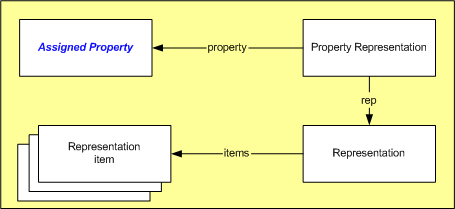
| Capability (C080):— representing_properties_textually | Date: 2007/06/22 12:22:11 Revision: 1.39 |
This section provides a business level overview of this capability.
In STEP, a property may be represented by text. Often this is used where quantitative representations are not suitable:EXAMPLE a requirement property may be expressed in words "The laptop shall be grey in colour"
EXAMPLE a quantity property may be represented as "as required"

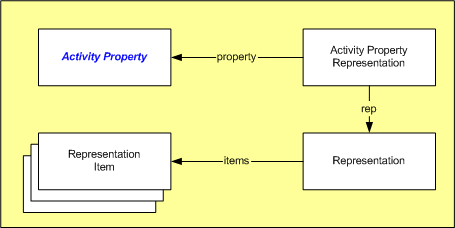
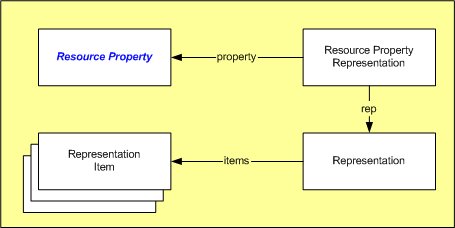
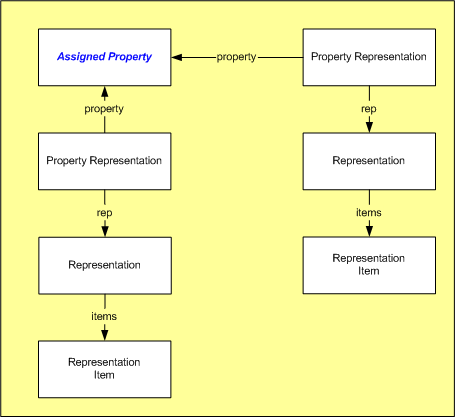
EXAMPLE a mass property may be represented as 1kg and also represented as 2.2lbs
EXAMPLE Paragraphs in a text representation of a property.
This section provides an overview of the information model that supports this capability.
The model used for representing properties textually is shown in Figure 5 below:
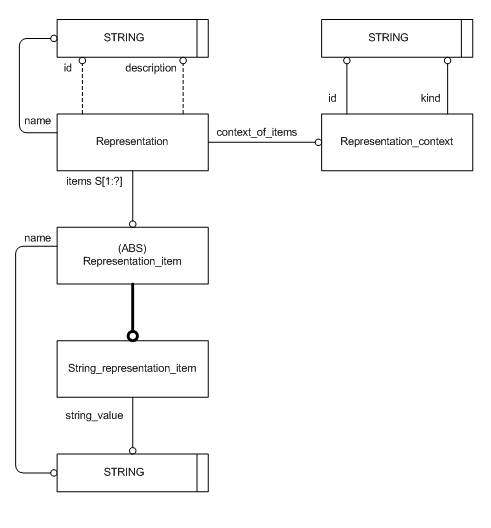
To represent a text property, the following entities are required:
Figure 6 shows an example instantiation of a text property which represents a requirement, assigned to a Requirement_view_definition (details omitted in figure). There are two representation items which describe the text in each paragraph of the requirement.
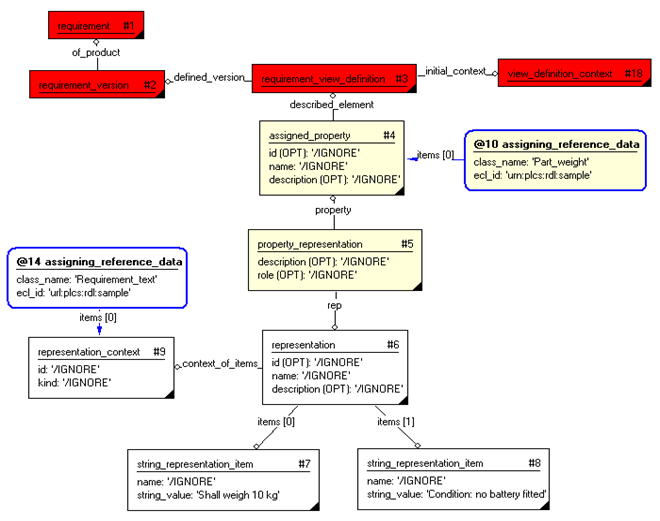
Process properties are linked to representation instance in a different way to product properties. Figure 7 shows the instances used to link a process property to its representation.
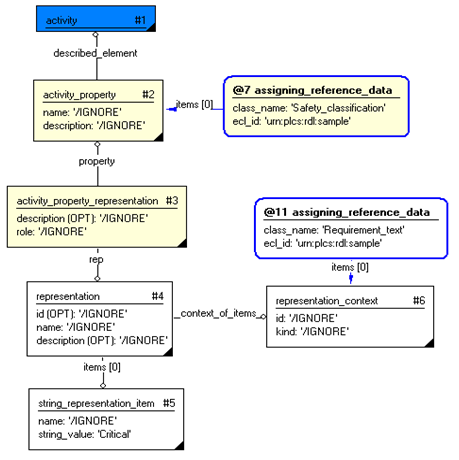
Issue: THX-2 by Tom Hendrix (04-05-10) [minor_technical, closed] - {Type = contents}
rep item text includes *shall be less than * The rep item has the requirement semantic in its text, which means there are three ways to represent *required* : classification, qualification, and embedded descriptive text. Suggest using one of first two , consistently with other capabilities, and just putting the value in the rep item, thus *less than 5 kg.*Comment: (Ian Bailey 2004-07-29)
All this is doing is capturing the text produced by a requirements management tool. Most requirements start with "the thing shall...". This is the way we handle requirement text, and it would be inappropriate to expect pre-processors to change the requirements text produced by systems engineers.Comment: (Mike Ward 2005-01-05)
Issue closed for reasons provided in IBY's comment of 2004-07-29.
Issue: THX-3 by Tom Hendrix (04-05-10) [minor_technical, closed] - {Type = contents}
Figure 7 missing. Need to commit and check the referenceComment: (Ian Bailey 2004-07-29)
This seems to be OK now.
Issue: THX-5 by Tom Hendrix (04-05-10) [minor_technical, closed] - {Type = contents}
*EXAMPLE A required property may be represented with a text string; * The laptop shall weigh less than 5kg.* Suggest explaining in the vicinity of figure 6 that the rep item does not include all this text, and does not identify the item. See also THX-2Comment: (Tom Hendrix 04-05-10)
EXAMPLE The laptop shall be grey in colour. Suggest an illustration that shows both colour and mass as two separate instances of assigned_property.Comment: (Ian Bailey 2004-07-29)
Made a small change. Again, this is valid text, as it would have come from a requirements tool. There may not be a laptop product anywhere that this is assigned to - in fact this is often the case with requirements specs.
Issue: NN-1 by Nigel Newling (05-11-17) [minor_technical, closed] - {Type = contents}
Is the mandatory recording of the date and time when a property was assigned a value necessary? This is not always known or relevant. It would require a lot of extra entity instances to represent an unknown value. Same applies to person and organization characterisation.Comment: (Peter Bergström 2006-04-18)
I agree, there is no need to make things overly complicated and force people and applications to 'invent' data. I suggest a change of wording to 'strongly recommended' or such. The new templates have them optional, currently.Comment: (Peter Bergström 2006-05-27)
Date and time, as well as organization and person, have been made optional.
Issue: NN-2 by Nigel Newling (05-11-17) [minor_technical, closed] - {Type = contents}
Make it clear that the name of the property maps to Assigned_property.name and the value of the property maps to String_representation_item.string_value.Comment: (Peter Bergstrom 2006-04-18)
I think this is clear from the new templates.
Issue: NN-3 by Nigel Newling (05-11-17) [minor_technical, closed] - {Type = contents}
Instantiation diagrams need to reflect the developments in reference data and how classification is handled i.e. apply general rule that id and name not populated but contained in External_class. Indeed, new template notation could be used in the diagrams.Comment: (Peter Bergström 2006-05-29)
fixed.
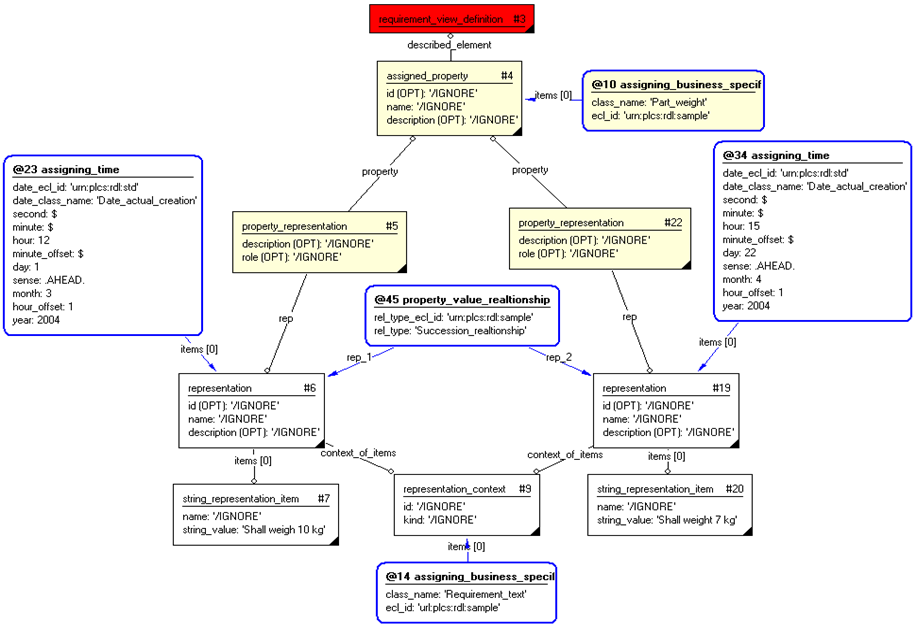
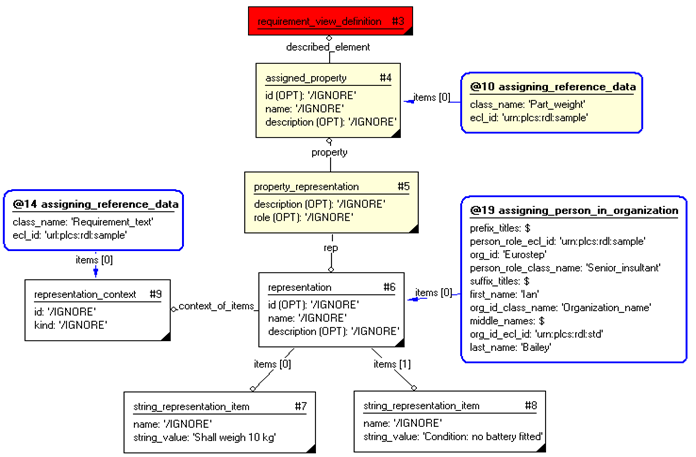
The following sections define a set of templates for the capability, where a template is a specification of a set of entities that need to be instantiated to represent a given set of information.
This section specifies the template representing_text_property.
NOTE An explanation of a template and the associated instantiation path is provided in the Template overview section.
This template describes how to represent a text string value for any property.
EXAMPLE A quantity property may be represented with a text string; "As required".
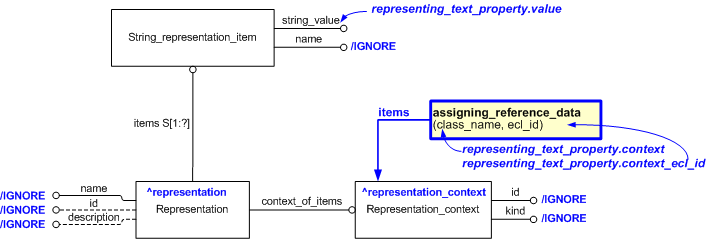

target
is the parameter to which the
Representation
is bound.
target
is the parameter to which the
Representation_context
is bound.
| Entity in path | Value | Inherited from |
| Representation.id | '/IGNORE' | — |
| Representation.name | '/IGNORE' | — |
| Representation.description | '/IGNORE' | — |
| Representation_context.id | '/IGNORE' | — |
| Representation_context.kind | '/IGNORE' | — |
| String_representation_item.name | '/IGNORE' | Representation_item.name |
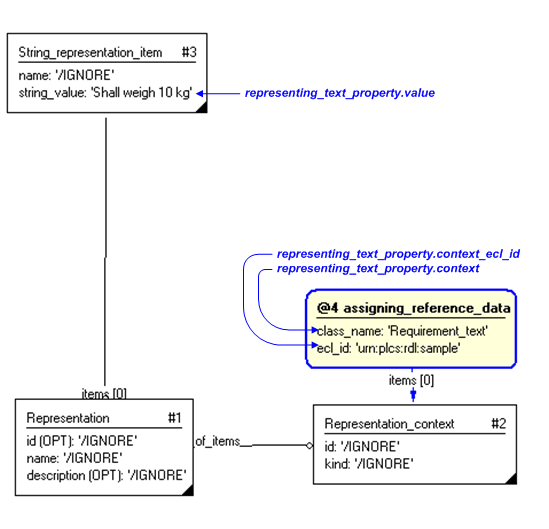
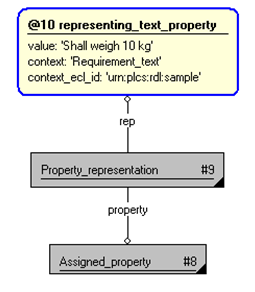
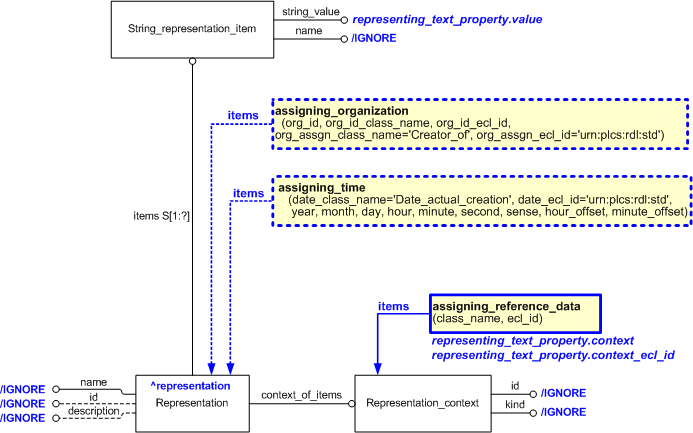
NOTE this characterization is optional.
Dates and time can be associated with the assignment of property value representation by using the template assigning_time.
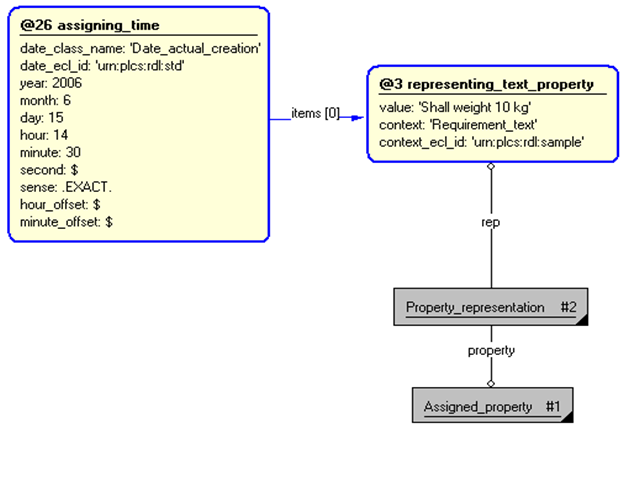
A creation date is commonly assigned to the template representing_text_property.
The date (and time) of creation of the property value representation is represented by using the template assigning_time to assign a date and time to Property_value_representation. The date assignment is classified as: "Date actual creation" (urn:plcs:rdl:std:Date actual creation) to indicate that it is the date when the property value representation was actually created. The assignment of time is illustrated in Figure 5 and instantiated by Figure 6.
Other dates and times may be assigned instead.
NOTE this characterization is optional.
An Organization can be associated with the property value representation by using the template assigning_organization. Similarly a Person_in_organization be associated through the template assigning_person_in_organization
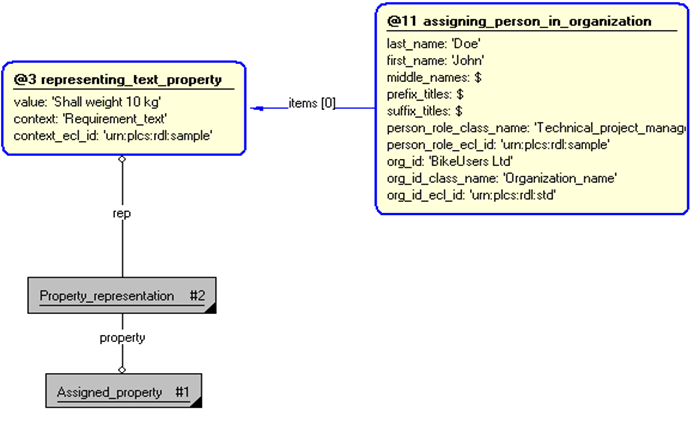
A common role in which an organization (or person) is assigned to a property value representation is as a "Creator of" the representation. The creating organization is represented by using the template assigning_organization assigned to Property_value_representation. A creating person (in an organization) is represented by using the template assigning_person_in_organization assigned to Property_value_representation.
The assignment of the organization or person (Organization_or_person_in_organization_assignment) is classified as: "Creator of" (urn:plcs:rdl:std:Creator of) to indicate that this organization or person created the property value representation. The assignment of an organization as being the creator of the representation is illustrated in Figure 5. The instantiation of the assignment of a person in an organization is illustrated in Figure 7.
Other roles of an organization with regard to a property value representation may be assigned instead.
This capability "Representing Text Properties" is related to the following capabilities:
This capability "Representing Text Properties" is dependent on the following capabilities:
© OASIS 2010 — All rights reserved